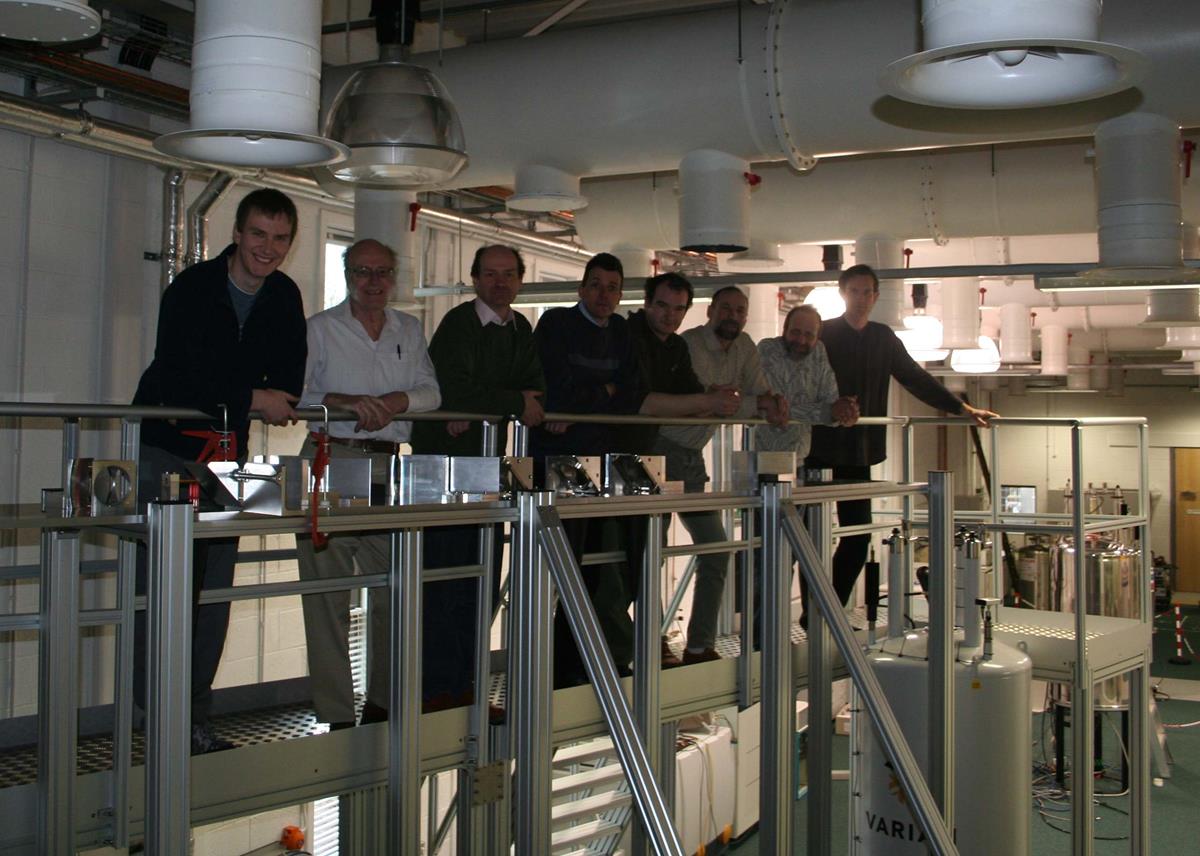Mid February 2009 saw the delivery to the Warwick University NMR group of the quasi-optical beam transport structure which will transport 400 GHz gyrotron power to the DNP sample in a Doty Magic Angle Probe
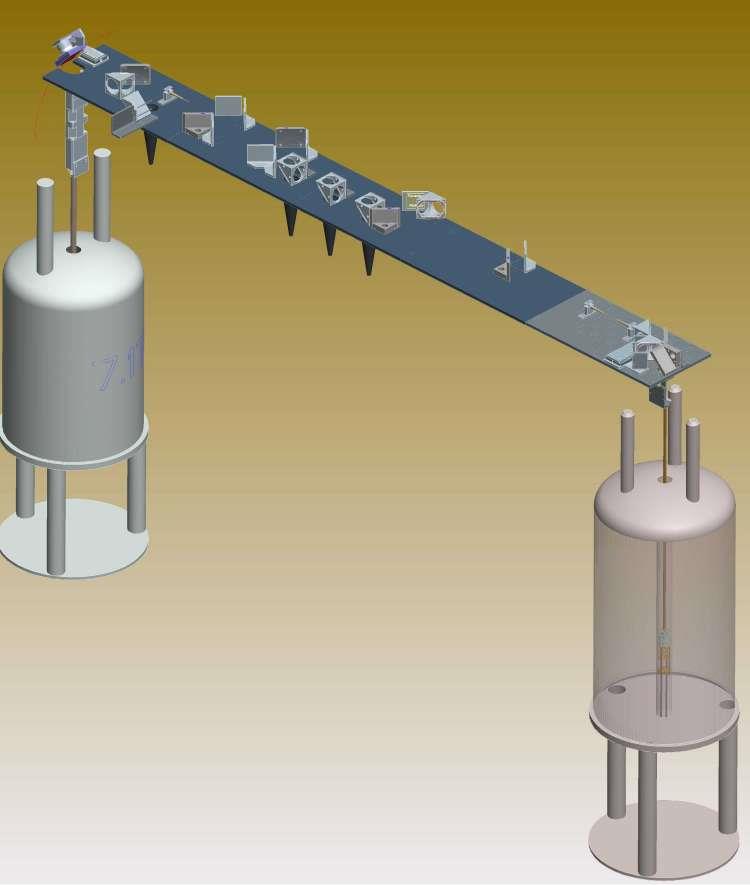
Starting from the left, the Pro/Engineer CAD image shows: A Vaslov Antenna, designed by colleagues in St. Andrews (Graham Smith and David Bolton) forming a near Gaussian beam at the start of the 4.6M long beampath (the distance is needed to make sure that stay field from the Gyrotron superconducting magnet does not reduce the homogeneity of the Varian /Magnex NMR magnet). The path provides
A beam dump - switchable on an air cylinder,
A three grid attenuator and
Provision for a reflection mode Ferrite Faraday rotator.
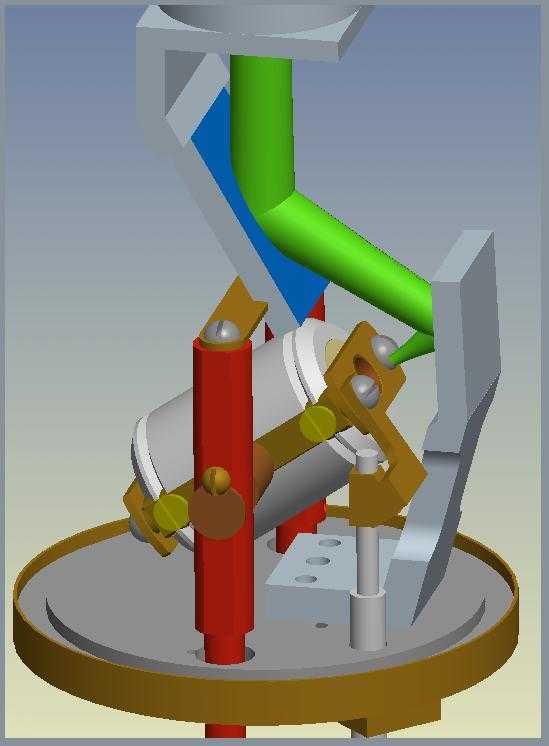
before the beam passes to a polarization defining back-to-back feed horn which will clean up and define the beam entering a small Martin-Puplett Interferometer. This interferometer allows the presentation of a specific polarization state (a point on a great circle of the Poincare sphere) to the corrugated probe which transports the high power 400 GHz energy down to the sample. The energy is passed into the spinning MAS sample holder a Gaussian Beam-mode optics telescope. There are details here which give reasons for reasons for spinning at this special "Magic" angle The beam form in this telescope is set out in this Pro/Engineer sketch n above and is realised in hardware thus:
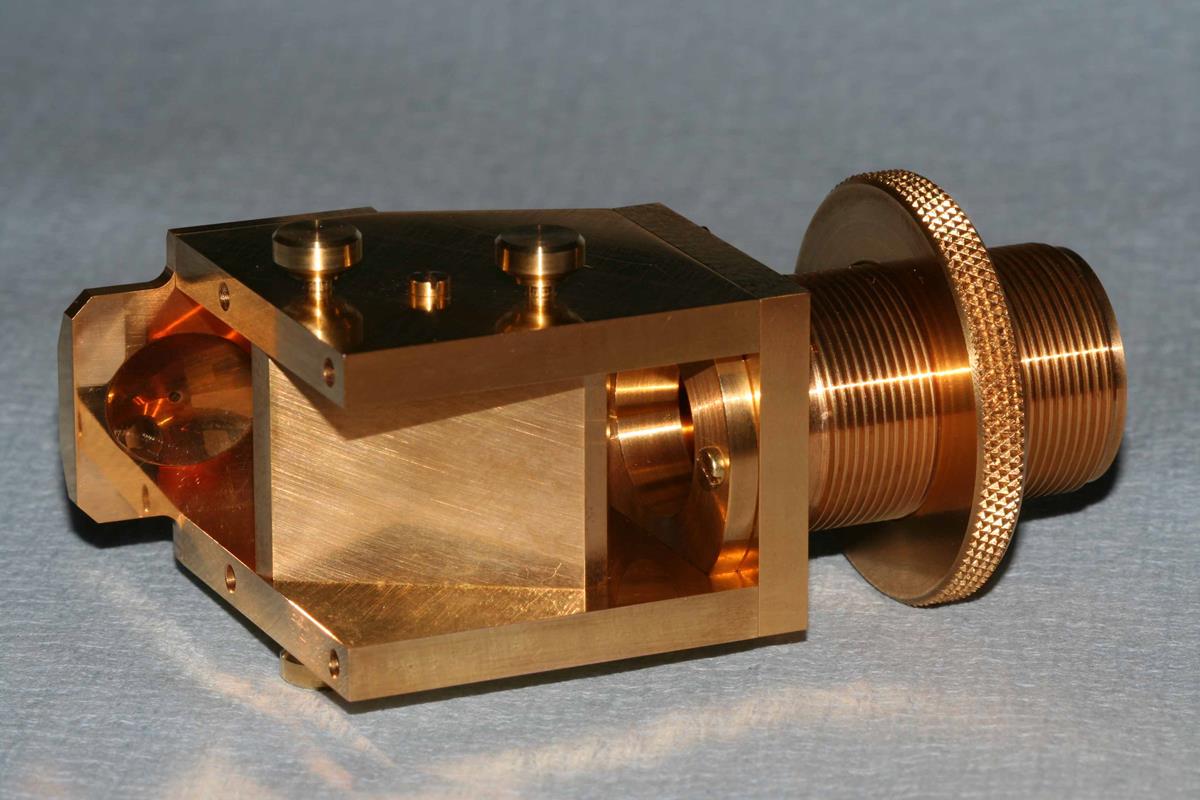
What follows is a series of images of the installation. The first is the beamline from the Vaslov Antenna
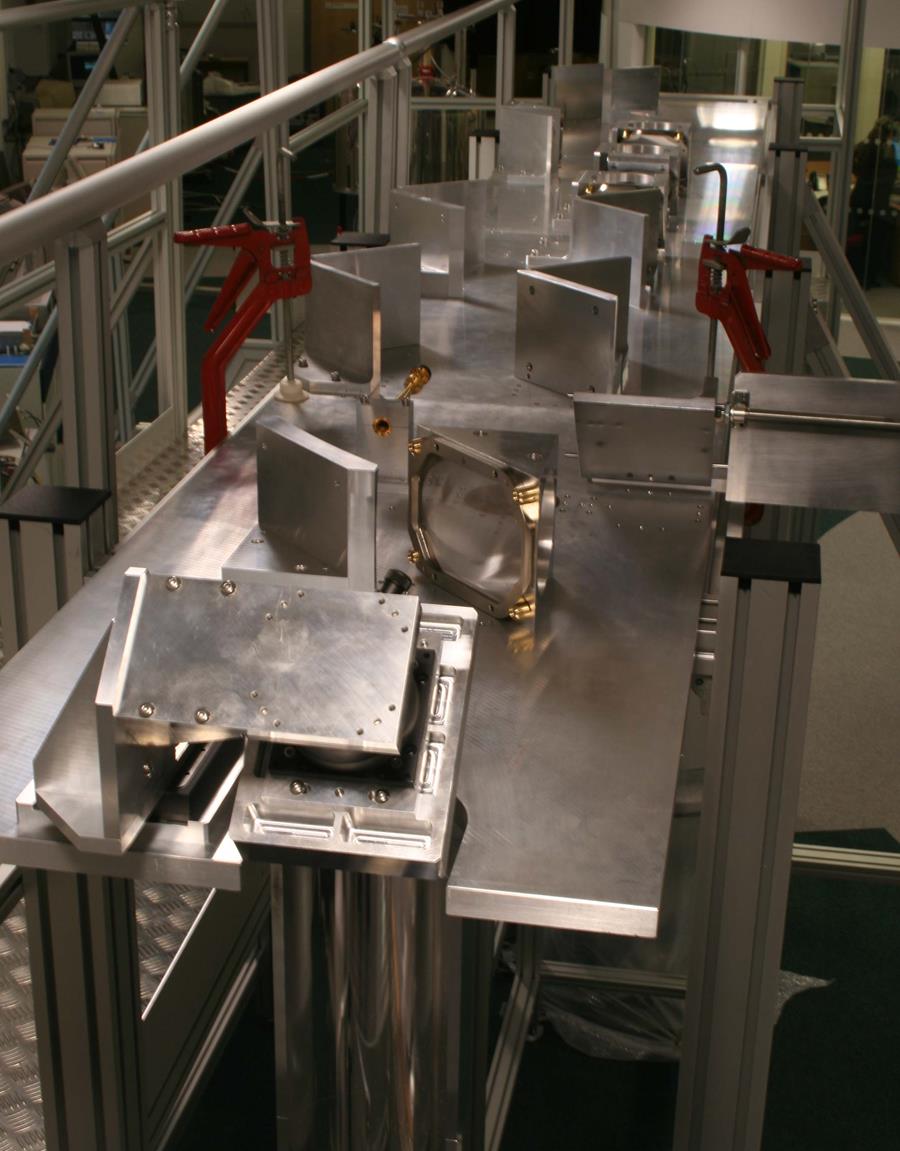
And this images show the small Marin-Puplett interferometer at the sample end, with the back-to-back corrugated horn on the right
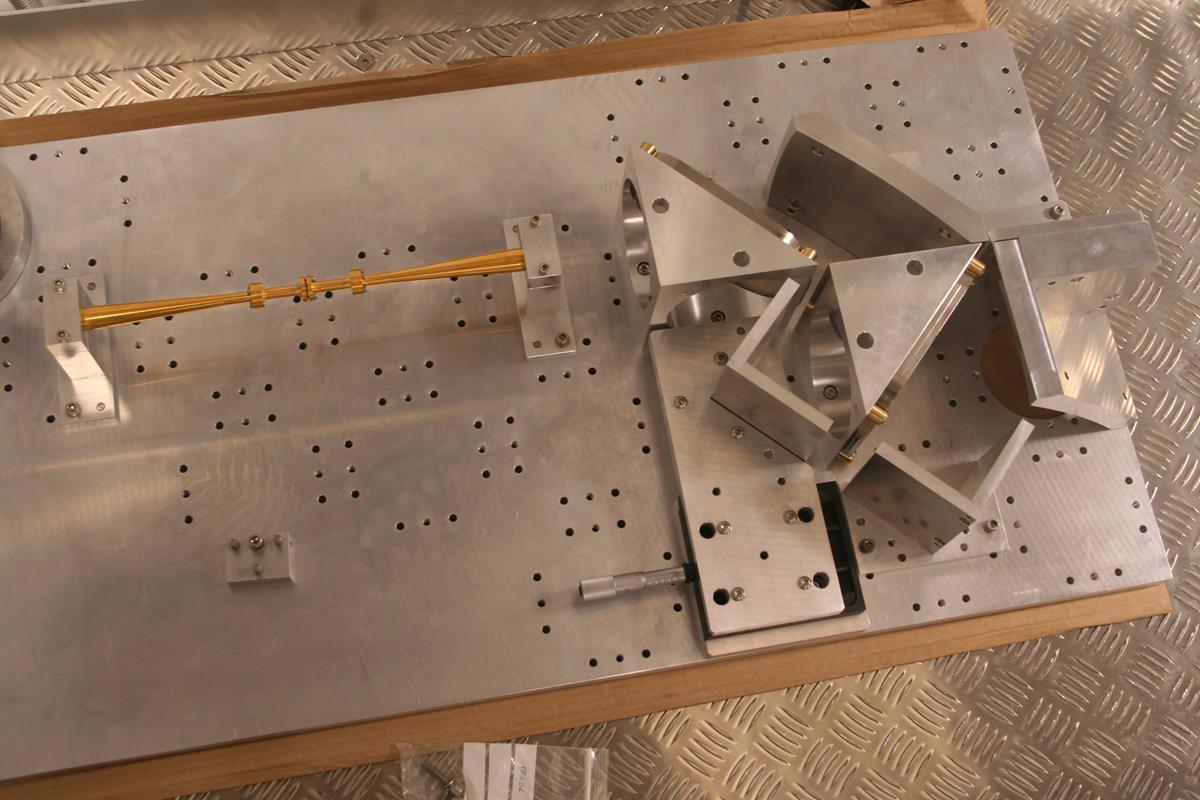
This image shows Prof Ray Dupree (second from Left) and his team - along with Richard Wylde, Trevor Walker and Andy Champion from TK on top of the structure (third, fourth and seventh from the left, respectively).
